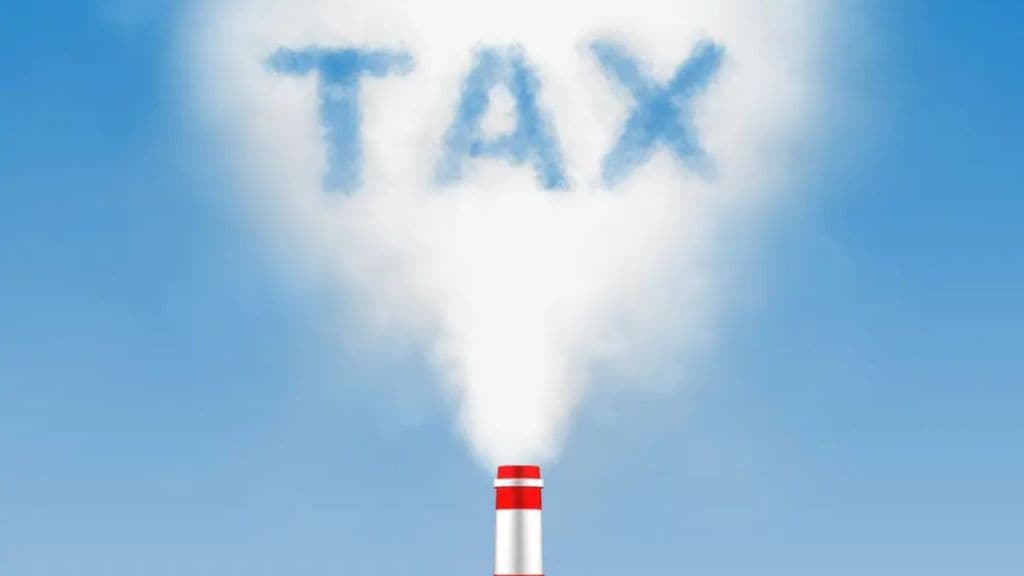By Madan Sabnavis
With rationalisation of both direct and indirect tax rates this year, the Budget is betting on higher buoyancy in income to ensure the tax revenue increases. It is also seen that growth in nominal GDP can no longer be assumed to be 11-12%. With deflation in several product segments, nominal growth was less than 10%. At the same time, the expenditure commitments on social welfare as well as capex has increased over time, which cannot be lowered. This may be the right time to explore new avenues of revenue. Besides, there cannot be over-reliance on central bank transfers as such funding tends to amount to monetisation.
Here, a cue could be to introduce a comprehensive pollution tax. The concept is not new, as there are vibrant exchanges which trade in carbon credits. However, the idea here is more Pigouvian in nature—any polluting activity needs to be taxed. Arthur Cecil Pigou was an English economist who espoused the imposition of a tax on any negative externality caused by economic activity. Pollution is a clear case where society in general gets affected. Hence, the concept of tax moves away from the commercial variety of “cap and trade”—here, the idea is to directly tax either the producer or consumer of a product or service which causes pollution.
The idea of such a tax is twofold. First, all entities causing pollution must pay for the same, making it democratic. Second, if the entities which pollute the environment (as producers or consumers) choose not to get into such activities, it will mean lower revenue for the government; however, this will ensure better quality of life for society. For instance, if people switch fully to electric vehicles, the revenue will dip for the government but air quality will improve across the country.
There are different ways of imposing such a tax. The first approach is to tax the polluting industry. A very rudimentary criterion would be to look at the ratio of power and fuel to turnover. While this assumes that the only pollutant is power and fuel, it is still easy to implement. Companies’ profit and loss accounts can serve as the basis for levying tax.
It is also possible to complicate the system and move beyond a single expenditure item. There are classifications of industries under the pollution index—red, orange, and green categories, having scores of 60 and above, 41-59, and 21-40 respectively. The white category is virtually non-polluting with a score of 20 and below.
The corporate tax rate could have an additional surcharge of 5%; or the tax rate could be a flat 32% instead of 30% for industries in the red category. For green, it could remain at 30%, and 31% for orange. There is, however, the issue of classifying companies, as they often produce multiple products.Companies producing 51% of any product would get classified under this heading and taxed accordingly. The norm of 51% could also be changed to 33% to cover those involved in two to three main products. If companies produce multiple, “diversified” products, the sales of the top three products can be summed up.
This levy would be a direct tax and only affect profits and shareholders. It is, hence, a fair charge. A legitimate question could be on the possible allowances for companies involved in activities that improve the environment—common under corporate social responsibility spends. However, any allowance should be avoided as it can lead to tax arbitrage. The idea is to tax the polluting activity—any mitigating factors should not be allowed to be used as an umbrella.
The alternative approach can be through an indirect tax, where the levy is at the consumer end. Here, the end user pays tax on products classified under the three categories. Hence if petrol and diesel are taxed at 1/ litre, the cost is borne by the consumer. There will be an incentive to shift to other forms to escape the tax. The government can earn a lot of revenue on just motor fuel. The1 tax can fetch 15,000 crore annually. Intuitively, any increase can lead to proportionately higher revenues for the government. Further, every air ticket can have a pollution tax that is part of the fare—a100 tax on 200 million passengers annually can fetch `2,000 crore. The only consideration for the government, however, would be the inflation impact.
Balancing inflation with revenue will be the main consideration, and it is not possible to cover all products and services at once. It must be done in phases. The suggestion is to impose the tax selectively on the most polluting products—fuel and power, fashion, livestock, transport, data centres, construction, plastics, and chemicals—with the tax being variable.
Another ideological issue is taxing pollution caused by farming and livestock, given that it falls under the unorganised sector. Exemptions will be required, given the sensitive nature of such products. Hence, in the first phase, the pollution tax could be imposed on specific industries and services that are less controversial and easy to administer.
A pollution tax can be a major alternative revenue stream for the government, and it can be harnessed gradually. It will bring in more consciousness within the society and help reduce overall levels of pollution in future.
The writer is chief economist at the bank of Baroda.
Disclaimer: Views expressed are personal and do not reflect the official position or policy of FinancialExpress.com. Reproducing this content without permission is prohibited.

